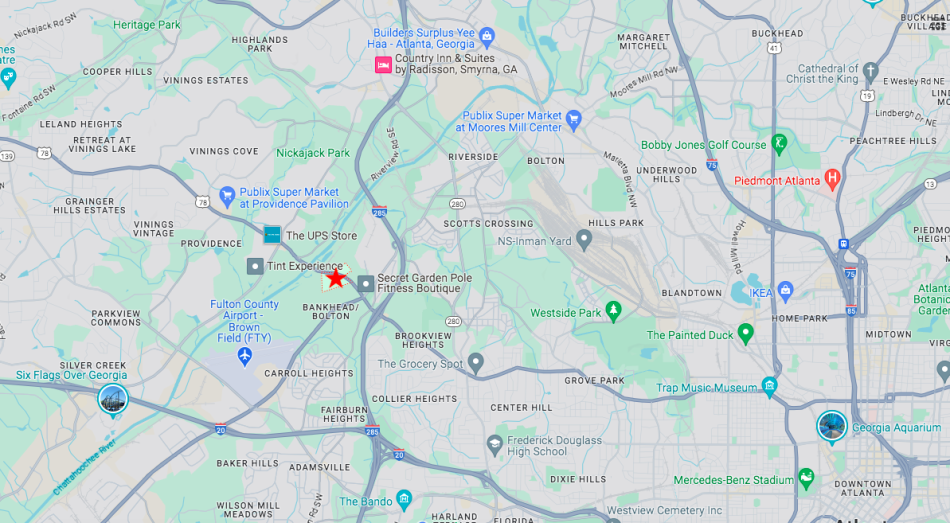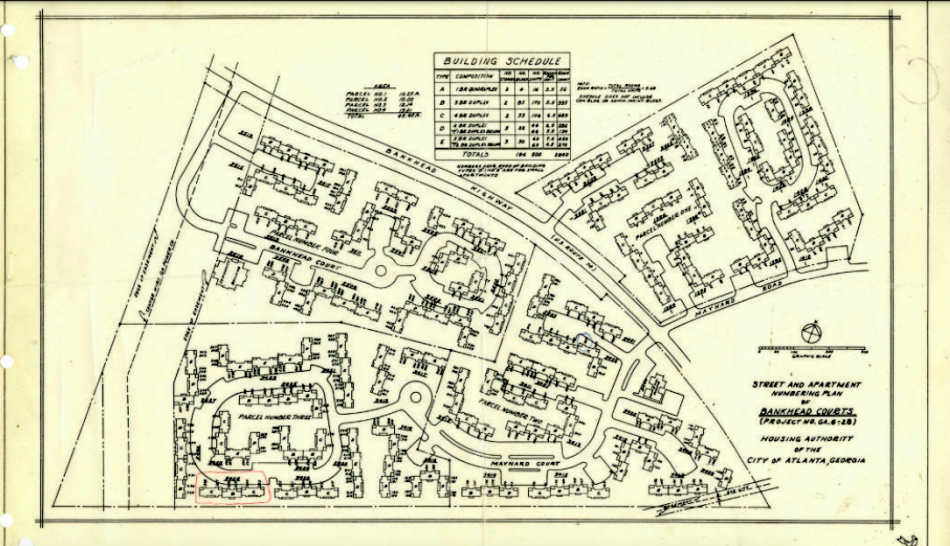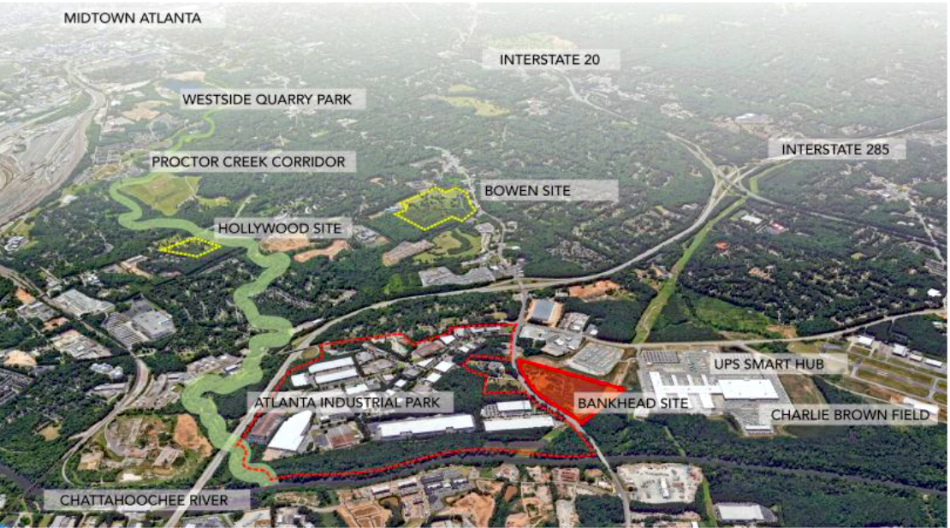Cleared of public housing more than a decade ago, a property west of intown Atlanta with rich cultural significance but a troubled social track record is officially a blank slate for redevelopment, as of this week.
Atlanta Housing, which bills itself as one of the nation’s most forward-thinking housing authorities, issued an open challenge to city dwellers Monday to come up with viable concepts that will reshape the former Bankhead Courts site in Northwest Atlanta—and boost the community in the process.
Formerly home to rapper, singer, and songwriter Lil Nas X and other influential music artists, the former Bankhead Courts property is situated just Outside The Perimeter, north of the point where Donald Lee Hollowell Parkway (formerly Bankhead Highway) meets Interstate 285.
Today, the 35-acre site is entirely vacant, with just a portion of a former interior street, Maynard Court, still intact. Perks of the location, according to AH, include its adjacency to the Chattahoochee River (about .4 miles away) and access to an I-285 interchange about a half-mile in the other direction.
AH has released a Request for Ideas, or RFI, that invites not just developers but nonprofit organizations, philanthropic groups, and regular community members to share ideas—whether elaborate or basic—for what the important former public housing site should become.
Part of AH’s goals, as stated by newly appointed president and CEO Terri Lee, is to create or preserve 10,000 affordable housing units over the next five years. But all options for Bankhead Courts will be taken into consideration, per the agency.
“Whether you have a short thought or description, an image, or a big redevelopment strategy, we welcome your participation in reimagining Bankhead,” reads the RFI. “AH recognizes the value of the property for several possible usage types and [feels] everything is open and on the table for discussion.”
 The Bankhead Courts site today (starred) in relation to Six Flags Over Georgia, Westside Park, and Midtown. Google Maps
The Bankhead Courts site today (starred) in relation to Six Flags Over Georgia, Westside Park, and Midtown. Google Maps
 A Bankhead Courts context map, showing recent or proposed developments in yellow, with intown Atlanta located off screen at right. Atlanta Housing
A Bankhead Courts context map, showing recent or proposed developments in yellow, with intown Atlanta located off screen at right. Atlanta Housing
Between 1968 and 1970, Bankhead Courts was originally developed across 45 acres in four phases, with 65 buildings standing two and three stories on the property. Those townhome-style structures housed 500 units, most of them with three bedrooms. Problems over time included construction deficiencies, youth vandalism, sewer backups, and—as with most of Atlanta's public housing—poor maintenance. Following a problematic era fraught with drug sales and crime, Atlanta Housing was granted HUD authorization in the late 1990s and early 2000s to start bringing down buildings, and by 2011, the site was fully cleared.
Another attribute of the site today is its proximity to Atlanta Industrial Park and the Fulton Industrial District, which could provide a source of job opportunities and training, per AH officials.
Ideas collected over the next two months will help inform the second phase of redevelopment: a competitive Request for Proposals that AH will issue to developers and other commercial firms with a goal of “implementing a collective vision,” per the agency.
All RFI submissions are due by 5 p.m. June 7. Find more information on the idea submission process here.
AH expects to release a summary of RFI submissions and to share some ideas at the end of June.
...
Follow us on social media:
Twitter / Facebook/and now: Instagram
• Bankhead news, discussion (Urbanize Atlanta)








